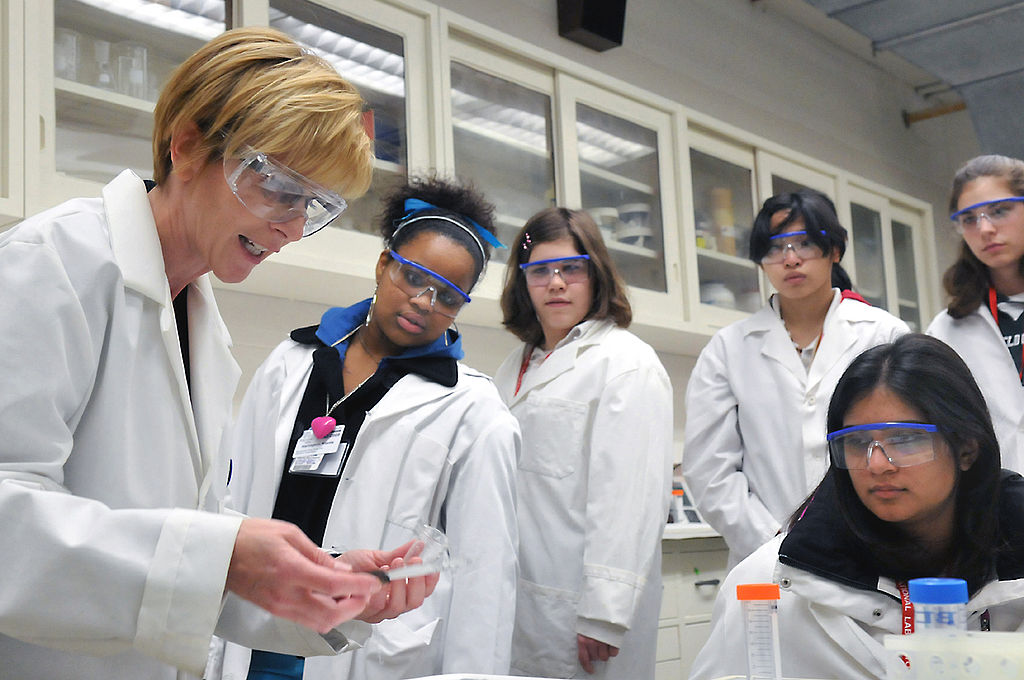History is full of women whose scientific contributions have been hidden under the shadow of a man’s name. Rosalind Franklin’s research on the structure of DNA was masked by Watson and Crick. Jocelyn Bell Burnell discovered pulsars,(remnants of supernovas) but the Nobel prize for the work went to Anthony Herwis, her supervisor and Martin Ryle. Recognition for Esther Lederberg’s work, which established the basis for genetic engineering in bacteria, went to her husband. But surely this is history and such gender inequalities don’t exist anymore?
Unfortunately not, today only 13% of the STEM (Science, Technology, Engineering and Mathematics) workforce is female. This means that science is lacking the perspective of half the population. From a business standpoint, diversity in the work force has been proven to increase productivity in the workforce. It also means women are missing out on higher wages as STEM graduates typically earn more than graduates of other subjects.
Engineering is notorious for being the most male of the STEM subjects with just 15% of engineering graduates being female. This is reflected in the statistics from University of Sussex, which shows that in the academic year 2015-16, just 12% of the undergraduates studying engineering were female and this drops to 9% for postgrads.
In the UK other STEM subjects show less of a gender gap or are dominated by females such as subjects allied to medicine, veterinary science and agriculture. This is reflected at Sussex with 58% of the life sciences department and 82% of the school of psychology being female.
“With the recent university focus on gender equality and a rash of Athena SWAN awards, we have seen real strides in equality for women.” Says Sam Cartwright-Hatton, the lead for equality and diversity for the School of Psychology. Athena SWAN awards are awarded to institutions for their work addressing gender in equalities. At Sussex several departments have these awards including the Life Sciences, Mathematics and Physics and Astronomy as well as the School of Psychology, the former having a silver award and the latter three, a Bronze.
People have long searched for a reason as to why certain STEM subjects are more popular with women. One suggestion is that human-based STEM subjects appeal to women’s caring nature. This explanation hardly satisfies as injecting a rat and then mushing up its brain to see if it’s hooked on cocaine can hardly be considered a ‘caring’ act.
From an early age we are still told that maths, physics and computing are ‘boys subjects’ more suited to the logical male brain.
A more justified explanation is that from an early age we are still told that maths, physics and computing are ‘boys subjects’ more suited to the logical male brain. Outreach programs at Sussex are working hard to address these issues. The school of engineering and informatics runs programs such as NerdNite, where female scientists talk about their research in an interesting and accessible way. In 2015 they also ran ‘Robogals’ days, where school girls got to work with robots. The program focused on highlighting the creative aspects of engineering to try and appeal to those student who may be less scientifically inclined.
However Claudia Eberlin, head of the Physics and Astronomy department, points out that science fairs and master classes alone won’t be enough to encourage women into the sciences. She believes “the key is creating an environment that people like working in and then the encouraging almost takes care of itself.”
Such changes are already taking place at Sussex as back in 2013, Antonella De Santo became the first female physics professor at the university. She says she “feels very proud to have become the first female physics professor at a progressive university such as Sussex. The times were ripe and I was privileged enough to break the ice first.” But she admits the road has not always been easy as she had to be strong and sometimes stubborn to stop “the naysayers from getting at me or my dreams”
It certainly seems as though things are moving the right direction for gender equality in science at Sussex. However change is slow and so in the meantime, female scientists will need remain determined and supportive of each other.
IMAGE: Wikimedia commons



